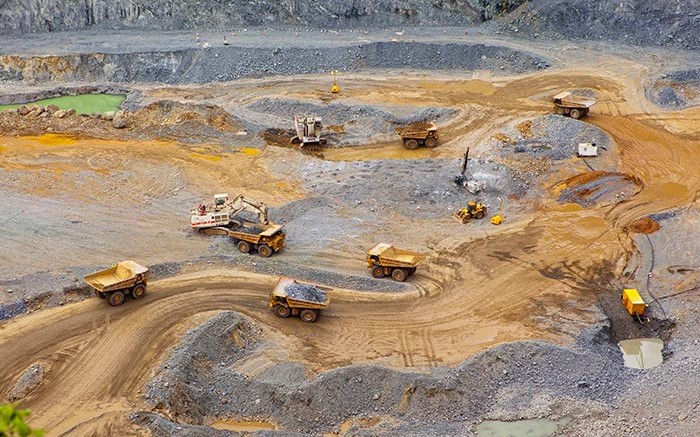African Barrick Gold — now called Acacia Mining (LSE: ACA) — has signed an earn-in agreement with Sarama Resources (TSXV: SWA) on its South Houndé project in Burkina Faso and approved an underground mining operation at the Gokono pit at its North Mara mine in Tanzania.
Under the deal with Sarama, Acacia Mining can earn up to 70% by spending US$14 million in staged payments on the project, 260 km west of the capital Ouagadougou. The South Houndé project is situated within the 30 km long Tankoro structural corridor and is in the same Southern Houndé Greenstone Belt and stratigraphy as Semafo’s (TSX: SMF; US-OTC: SEMFF) Mana mine and Endeavour Mining’s (TSX: EDV; US-OTC: EDVMF) Houndé project.
Sarama has already defined an inferred resource of 29.1 million tonnes grading 1.6 grams gold per tonne at a 0.8-gram-gold-per-tonne cut-off grade for 1.5 million contained oz. gold, which includes 16.4 million tonnes averaging 2.1 grams gold per tonne.
Analysts at Investec Securities in London describe Acacia’s earn-in as “a low-risk foray into new territory,” and point out that Sarama’s CEO and founder Andrew Dinning was previously the CEO at Moto Goldmines, which Randgold Resources (NASDAQ: GOLD; LSE: RRS) and AngloGold Ashanti (NYSE: AU) picked up for the Moto gold project (now called Kibali) in the Democratic Republic of the Congo.
As president and chief operating officer of Moto Goldmines from 2005–2009, Dinning oversaw Moto develop from an exploration project with 4 million oz. gold to a pre-development project with 22 million oz.
“Dinning obviously has a nose for good projects, and the Burkina Faso ground holdings certainly look to be attractive,” Investec’s analysts summarize in a brief research note.
Tara Hassan of Haywood Securities says the project could “host a resource at least double the size of what is currently delineated,” and argues that “with Acacia focused on projects that can deliver greater than 150,000 oz. production annually, its investment in Sarama suggests that it has similar views for the potential of the project.”
In the meantime, Acacia’s decision to go underground at the Gokono pit at North Mara will help the company produce 450,000 oz. gold over a five-year mine life at all-in sustaining costs below US$750 per oz., according to the results of a definitive feasibility study.
Acacia is submitting its final permits and expects to produce ore from underground in the first half of next year.
The underground development will use an exploration decline in the Gokono pit and require US$37 million in pre-production capex.
The company says there could be upside beyond the initial five years “with potential for lateral extensions, as well as the mineralization remaining open beneath the 300-metre vertical depth cut-off used in the definitive feasibility study.”
The North Mara mine — 100 km east of Lake Victoria and 20 km south of the Kenyan border in the Mara-Musoma Greenstone Belt — consists of three open pits: Gokono, Nyabirama and Nyabigena.
On Nov. 27, Acacia forecast production this year of 700,000 oz. gold. In 2015 that amount should rise to 775,000 oz. gold and to 850,000 oz. gold in 2016. The company estimated that all-in sustaining costs would drop from US$1,362 per oz. in 2013 to an average of US$900,000 oz. between fiscal 2015 and 2019.
In a research note Nick Hatch and Peter Mallin-Jones of Canaccord Genuity in London called Acacia Mining “one of the most attractive gold shares listed in London,” and noted that the company “has gone on a transformational journey in the last two years.”
They added that “by 2019, Acacia estimates potential cumulative free cash-flow generation of US$800 million at US$1,100 per oz., rising to US$1,550 million at US$1,300 per oz. (pre-tax, discretionary capex, exploration and dividends). Investors can expect growing dividends over the next few years.”


Be the first to comment on "African Barrick changes name to Acacia, gets busy in Burkina Faso, Tanzania"